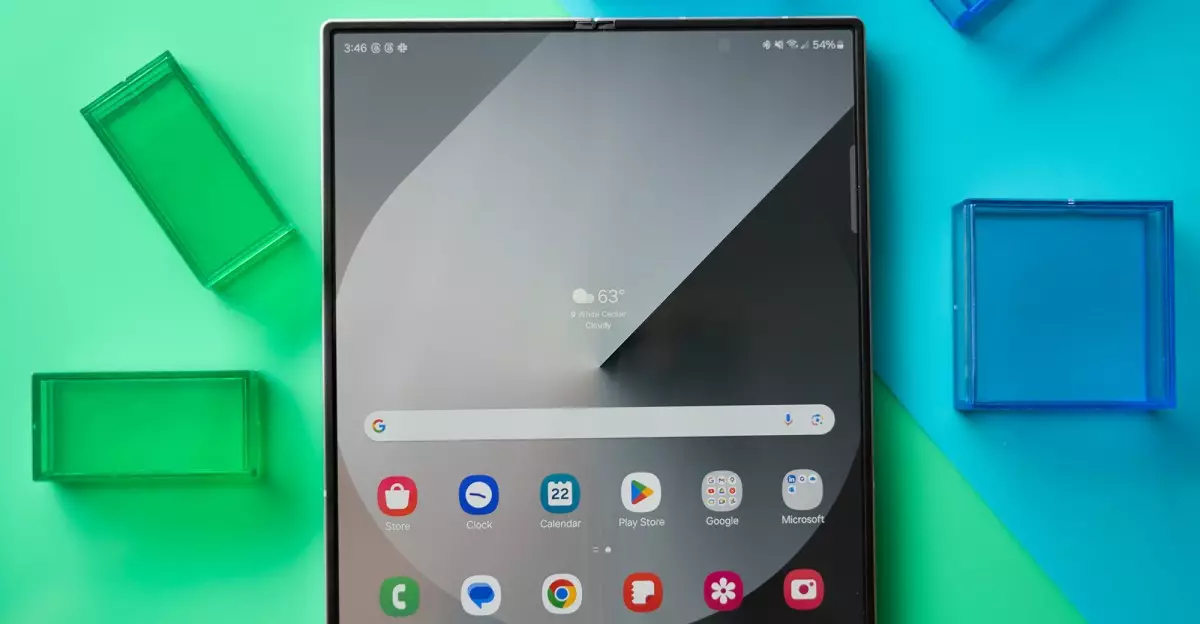The landscape of foldable smartphones remains as perplexing as it is promising. Despite countless efforts over the past decade, this innovative form factor continues to languish in relative obscurity. Samsung, the industry leader, appears poised to rethink its approach, yet skepticism persists regarding whether these initiatives will truly captivate consumers. The core issue isn’t just about creating a new product; it’s about fundamentally altering perceptions around durability, affordability, and practicality. For years, foldables have been positioned as futuristic yet bulky, fragile, and overpriced options—a perception Samsung evidently aims to challenge with its upcoming Ultra lineup. But is the strategy enough to ignite meaningful consumer interest?
The Paradox of Innovation Versus Consumer Demand
Samsung’s attempts to woo us with foldable devices have largely been iterative, offering modest improvements that fail to sway the broader market. While early adopters and tech aficionados may appreciate the novelty, the mass market remains hesitant. The numbers tell a clear story: foldables occupy a tiny sliver of the overall smartphone pie, roughly 1.5% in 2024, despite the extensive marketing and technological advancements. The success of flip phones from Motorola illustrates that foldables can resonate—but only in niches or specific formats. Samsung’s iterative improvements on established models, like the Galaxy Z Flip 6 and Fold 6, have yet to deliver a compelling enough upgrade to shift consumer habits. It’s clear that innovation alone cannot override basic concerns about durability, price, and usability.
Addressing the Elephant in the Room: Durability and Cost
One of the most persistent barriers to foldable adoption is the perceived fragility of these devices. Users worry about dust ingress, screen damage, and expensive repairs—concerns that remain largely unaddressed despite technological promises. Samsung’s label of “full dust proofing” remains elusive, as these phones continue to require gentle handling. The premium prices, often exceeding $1,500 for flagship foldables, further dampen enthusiasm, especially when comparable slab phones deliver near-identical functionality with greater durability and lower cost. For foldables to become mainstream, manufacturers will need to not only improve hardware robustness but also offer more accessible pricing tiers. Without substantial breakthroughs in durability and affordability, foldables risk remaining a niche luxury rather than a transformative technology.
The Strategic Play: Ultra Models, Price Variants, and New Designs
Rumors about Samsung’s upcoming Ultra-branded foldables signal a strategic pivot. By slimming down designs and possibly enhancing screen real estate, Samsung signals its intent to eliminate some of the key pain points. An Ultra foldable that balances form and function may appeal to those seeking the pinnacle of innovation, but it still faces the uphill battle of convincing consumers to invest heavily in a fragile form factor. Meanwhile, smaller updates like a larger front screen on the Z Flip 7 seem insufficient to break the cycle of incremental improvements. The inclusion of more affordable models—possibly with less advanced features—could broaden the market, but the question remains whether that’s enough to disrupt consumer inertia. Historically, Samsung’s success often hinges on offering a range of options that cater to different segments, yet in this case, the critical factors are durability and perceived value.
Looking Beyond Samsung: The Apple Effect and Future Market Prospects
The anticipation surrounding Apple’s potential entry into foldables by 2026 is perhaps the most intriguing element. Apple’s reputation for creating highly polished, durable, and user-friendly devices could elevate the entire foldable category, encouraging other manufacturers to follow suit. If a foldable from Apple better addresses durability, price, and ecosystem integration, it might serve as the catalyst needed to expand consumer acceptance beyond early adopters. Samsung’s challenge then becomes not only advancing its hardware but also convincing consumers that foldables are worth the investment amidst rising costs of living and increased scrutiny over durability. Maybe, with more innovative models hitting different price points, Samsung can foster a gradual shift where foldables become a significant part of the smartphone landscape.
The Future of Foldables: More Than Just Curiosity
Ultimately, for foldables to transcend their current status as novelties, manufacturers like Samsung must deliver genuine value—something that aligns with how people use their phones every day. It is not enough to introduce thinner, more stylish devices; they must be rugged, affordable, and seamlessly integrated into our digital ecosystems. The leap from curiosity to necessity might still be a few years away, but the current trajectory suggests that the category could finally mature if the right innovations are paired with strategic market positioning. Samsung’s upcoming line could serve as the pivotal moment for this technology—if those devices genuinely resolve past shortcomings and resonate on a practical level, they might finally turn foldables into a mainstream staple rather than an aspirational gadget.


Leave a Reply